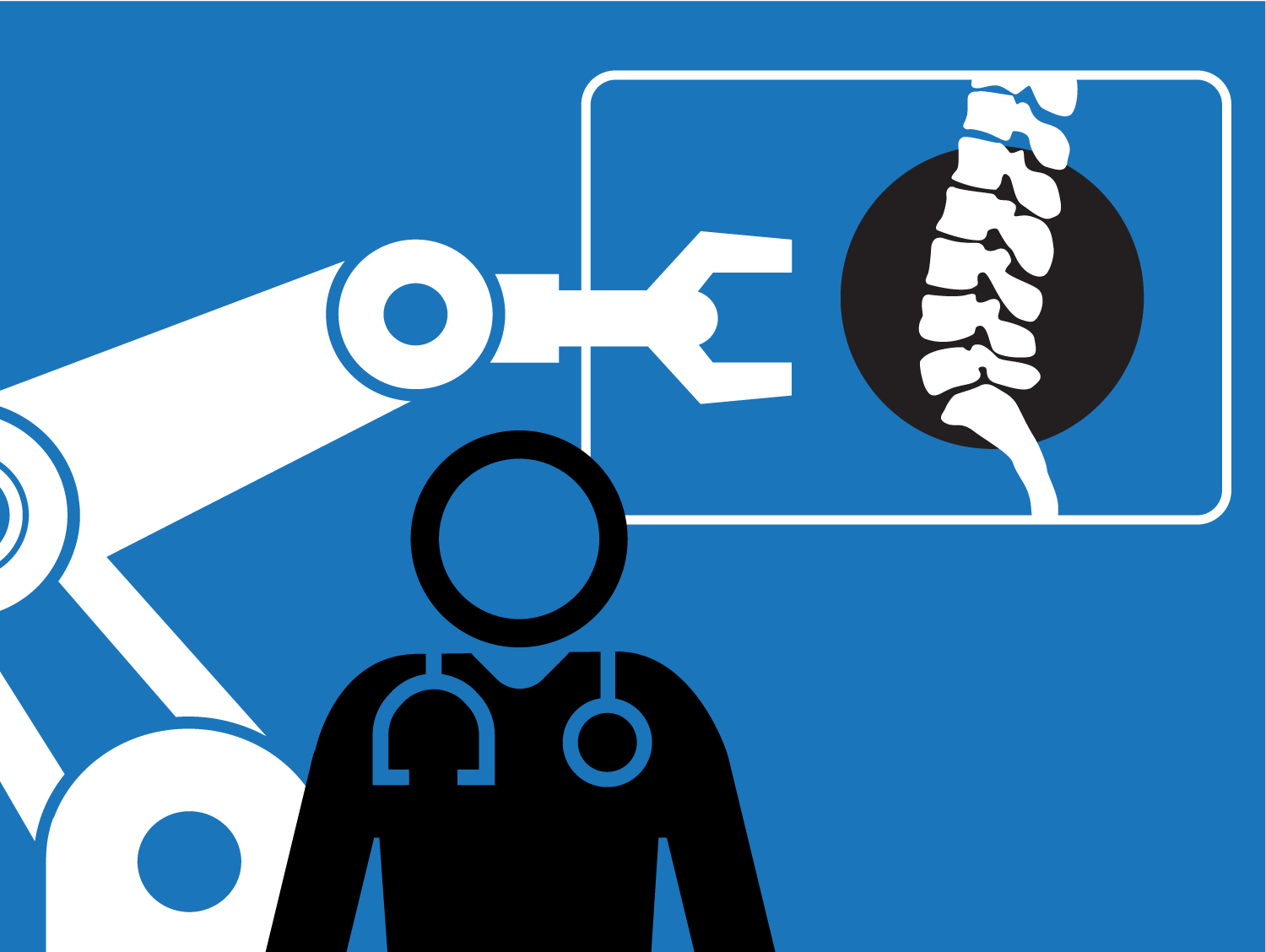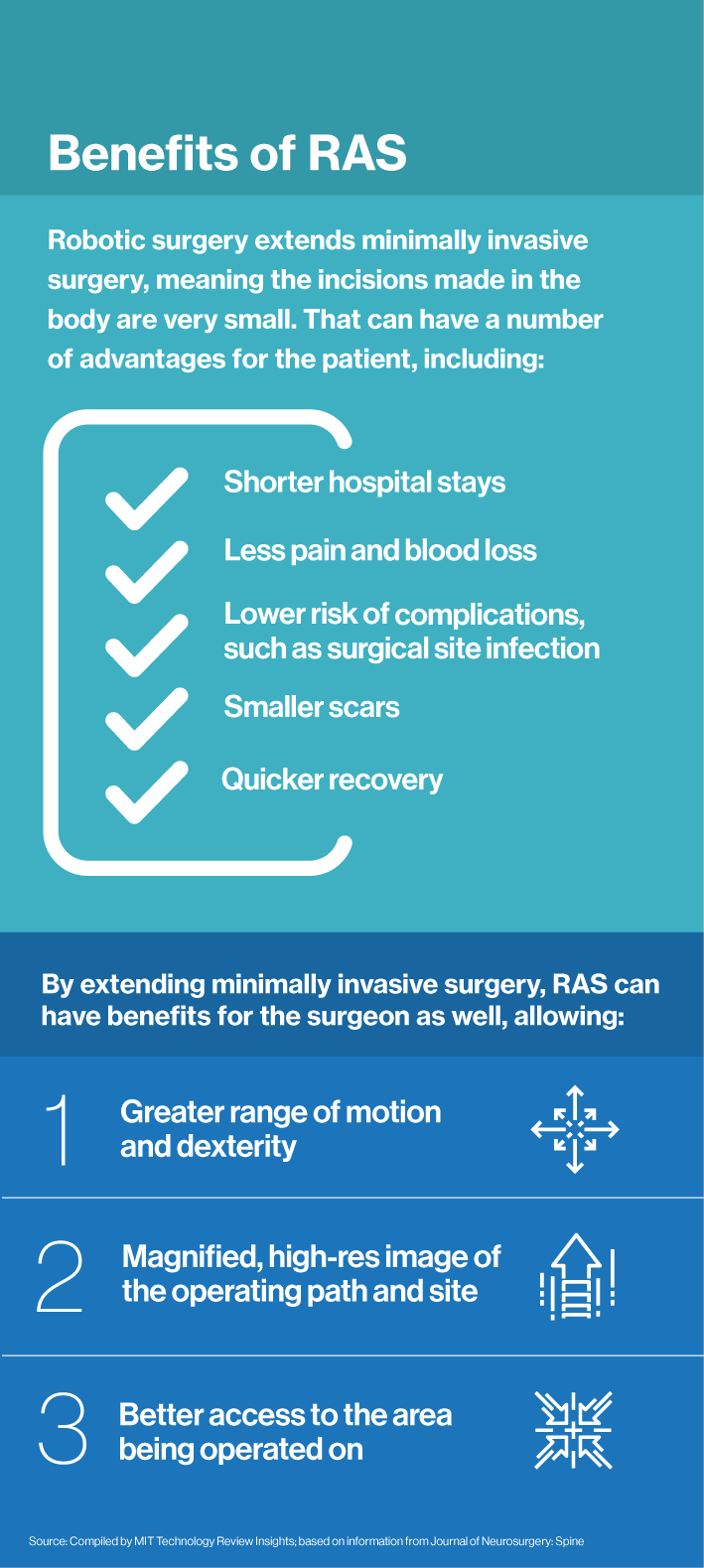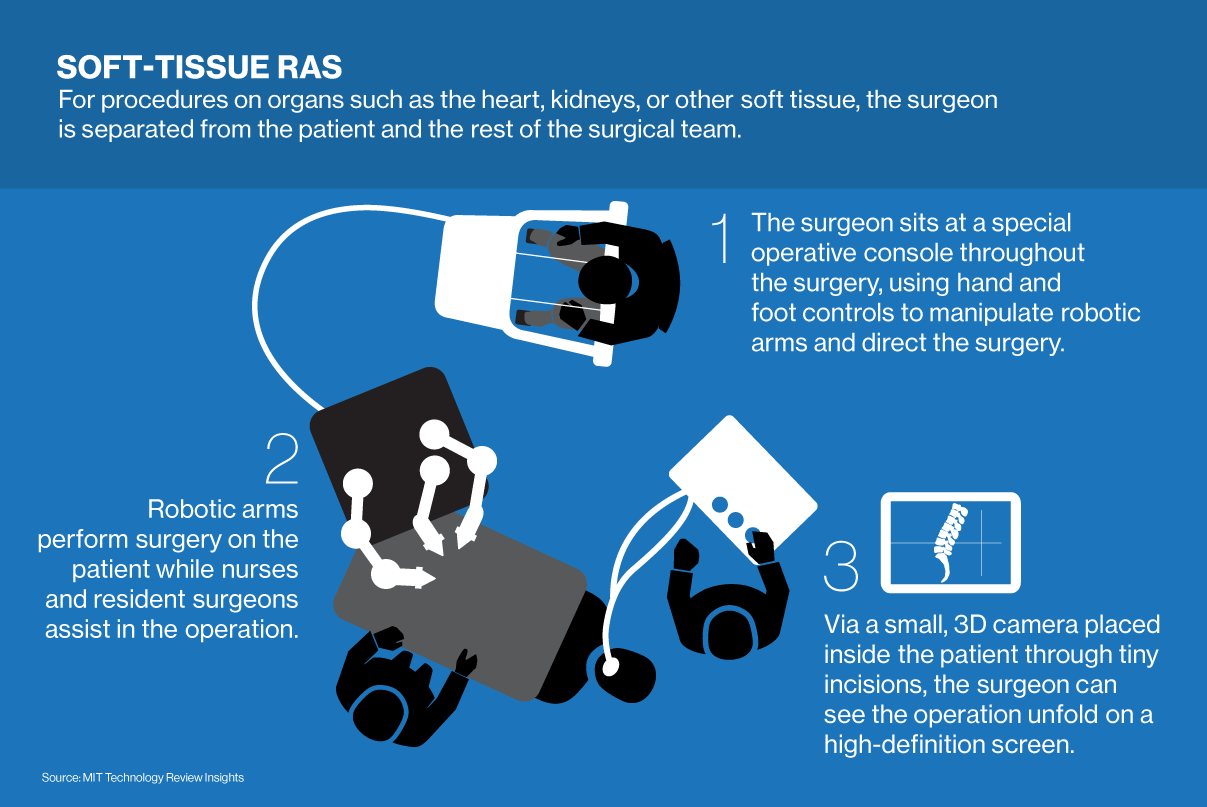Robotic surgery gives doctors new savvy
Jeffrey Gum remembers his early-career surgeries with wonder. We dissected a lot of muscle off the bone," says Gum, an adult and pediatric spine surgeon at the Norton Leatherman Spine Center in Louisville, Kentucky. That resulted in more blood loss than we'd prefer and big reconstructive surgeries." With a traditional, open surgery, a patient could take six months to a year to recover.
At that time, in the early 2010s, Gum was skeptical about the value of robot-assisted surgery (RAS), which promised to widen access to the benefits of minimally invasive procedures-less bleeding and scarring and less recovery time in the hospital. I felt the technology wasn't advanced enough to be applied in spine surgery-the nerve roots, the spinal cord right there."
This content was produced by Insights, the custom content arm of MIT Technology Review. It was not written by MIT Technology Review's editorial staff.

But in 2017, Gum started to look at RAS, also known as robotic surgery, from a process point of view. He recognized how much in spine surgery is consistent and reproducible; RAS could help streamline his procedures while reducing waste. This technology is really going to change the shape of our operating room," he said. I wanted to be a part of that."
Using RAS, Gum says his procedures are less traumatic to the body, more precise, and more predictable, and his patients are getting up and walking much sooner after surgery, compared with traditional, open spine surgery.
Like Gum, surgeons around the world have come to realize that RAS offers many health-care advantages for the future-even though there hasn't been widespead adoption. That may be changing, though, as advancements in technology and design are addressing effectiveness and raising the bar on system intelligence. And several studies have shown that frequent use of RAS for an expanding number of surgeries could boost its long-term value. Looking ahead, remote RAS-with a surgeon operating on a patient potentially thousands of miles away-could lead to wider access to high-quality surgery around the globe.
A revolution decades in the makingRAS is far from new. The first procedure was in 1985-a neurosurgical biopsy using a PUMA 560 robotic surgical arm. But the US Food and Drug Administration didn't clear an RAS system for use until 2000. Two decades later, the market for RAS still hasn't grown beyond the early adopter phase. Of the more than 50 million soft-tissue surgeries performed in 2018 globally, less than 2% were robot-assisted, according to Medtronic, a medical technology company. The United States has a higher adoption rate than elsewhere, but RAS still accounted for only 10% of all surgeries in 2018.

RAS has been held back because of the high costs (starting at about $1 million a unit) and a shortage of trained professionals. But with developments in converging technologies and methodologies, RAS is poised to mature, encouraging wider adoption. Stimuli include advances in assistive navigation, 3D imaging, artificial intelligence, big data, and of course robotics, which is becoming more sophisticated and less expensive. What's more, as with all maturing technologies, the cost of RAS will likely come down as new, more efficient designs are developed, bringing it more in line with the typical cost of non-robotic minimally invasive surgery.
One thing that isn't holding RAS back is patient interest. Perceptions of robotic surgery have been bolstered by movies and TV shows that represent the tools as more advanced than they are. That has fueled patients' positive expectations. Matt Beane, assistant professor in the University of California Santa Barbara's Technology Management Program, studied RAS implementation and training from 2014 to 2018. When interviewing patients, he noted frequent assumptions of how capable these systems are, and how willing they are to be operated on by a machine."
Some of the most important forces driving adoption are the proven benefits of RAS techniques. Though some RAS can be used for traditional open surgeries, it is generally associated with minimally invasive procedures. That means it involves smaller incisions than traditional open surgery, which results in less blood loss and pain, fewer complications such as infections, reduced procedure time, shorter hospital stays, and quicker recovery.

RAS benefits extend to the hospitals and surgeons. Using robotic systems in procedures such as orthopedic or endovascular surgeries reduces the number of radioscopic images required during an operation and can lead to less radiation exposure for the patient and the operating team. RAS standardizes surgical workflows, democratizing excellence in these procedures and allowing more and more surgeons to do them," explains David Simon, Medtronic's vice president of research and development for cranial and spine technology.
Download the full report.